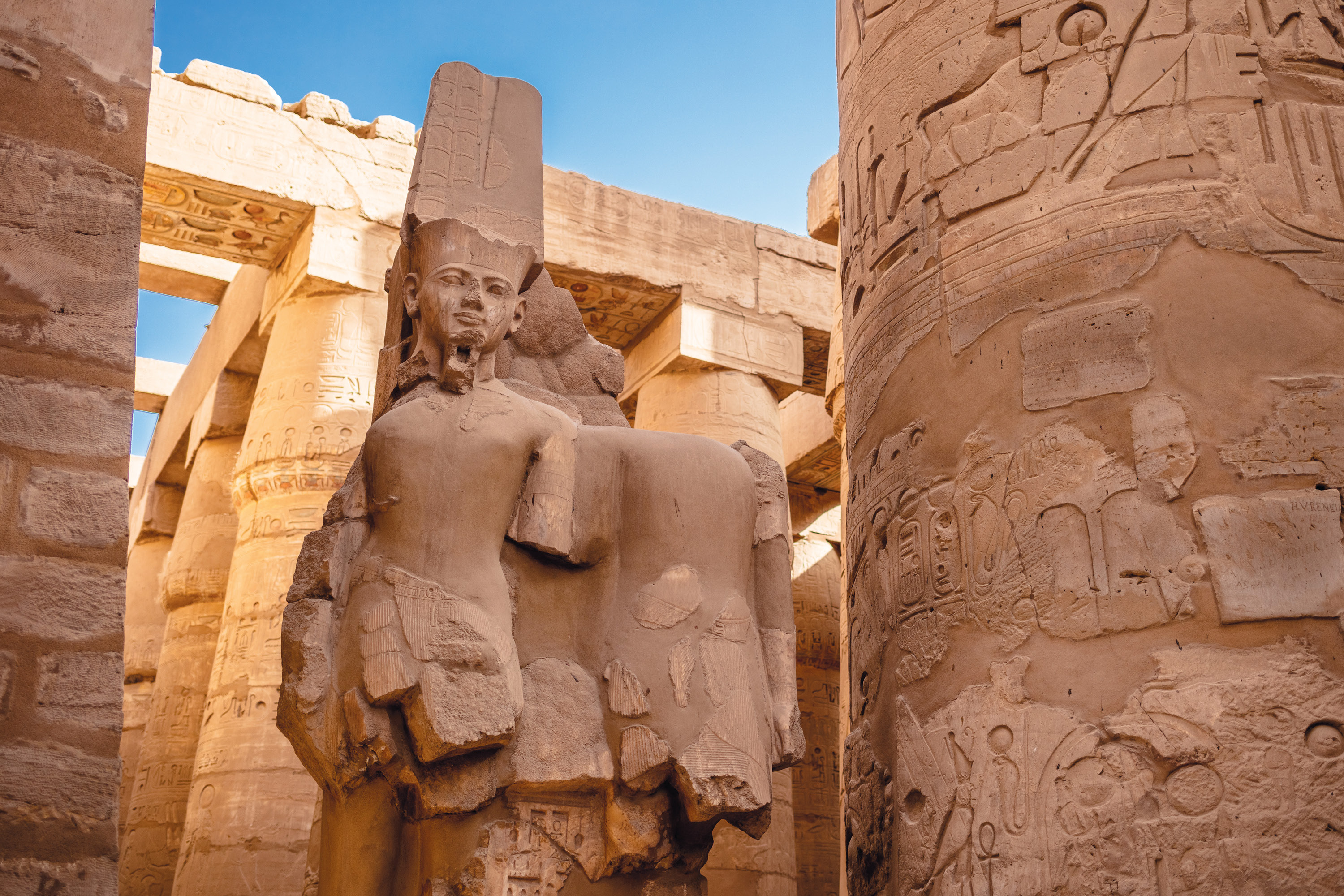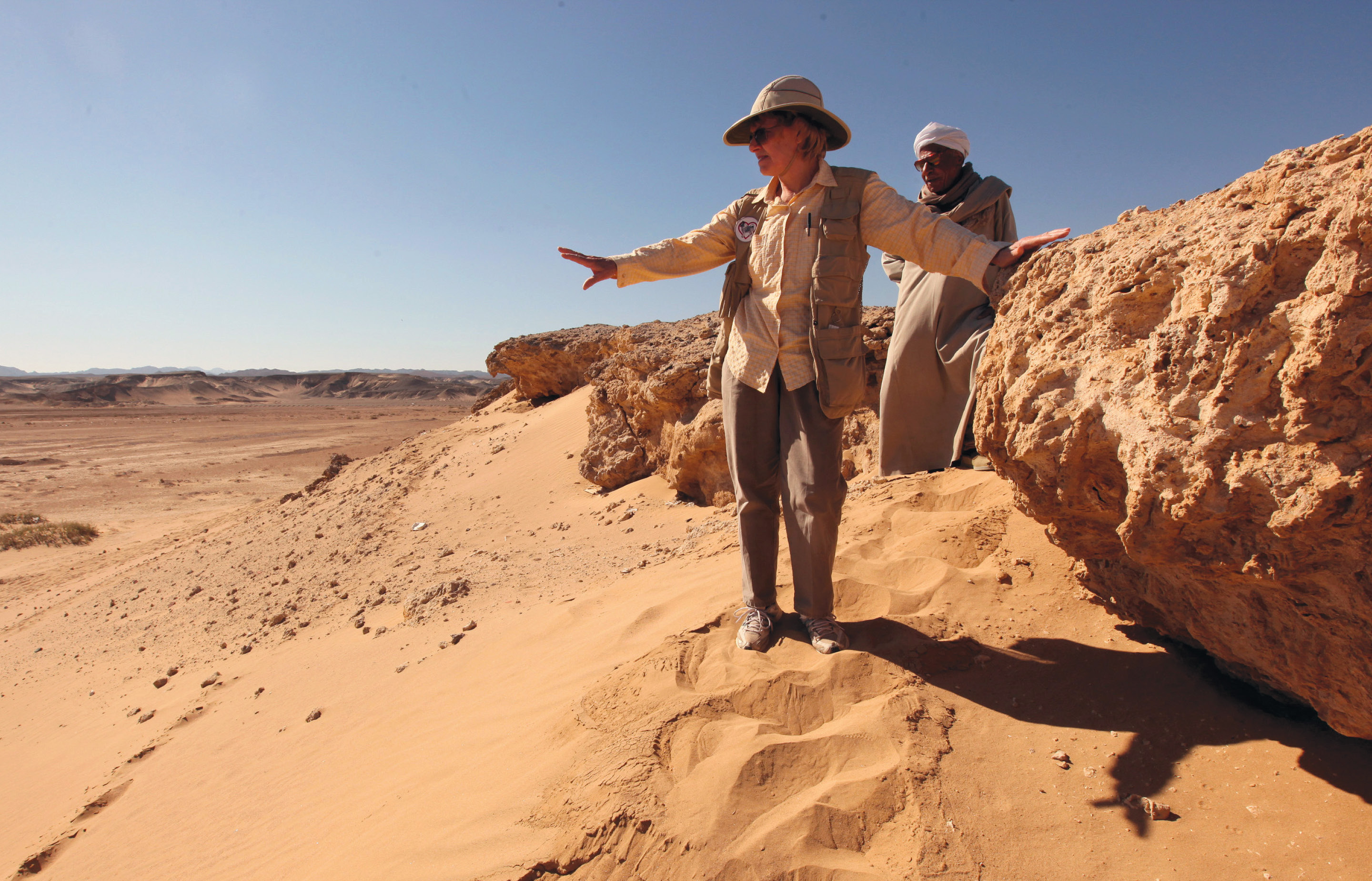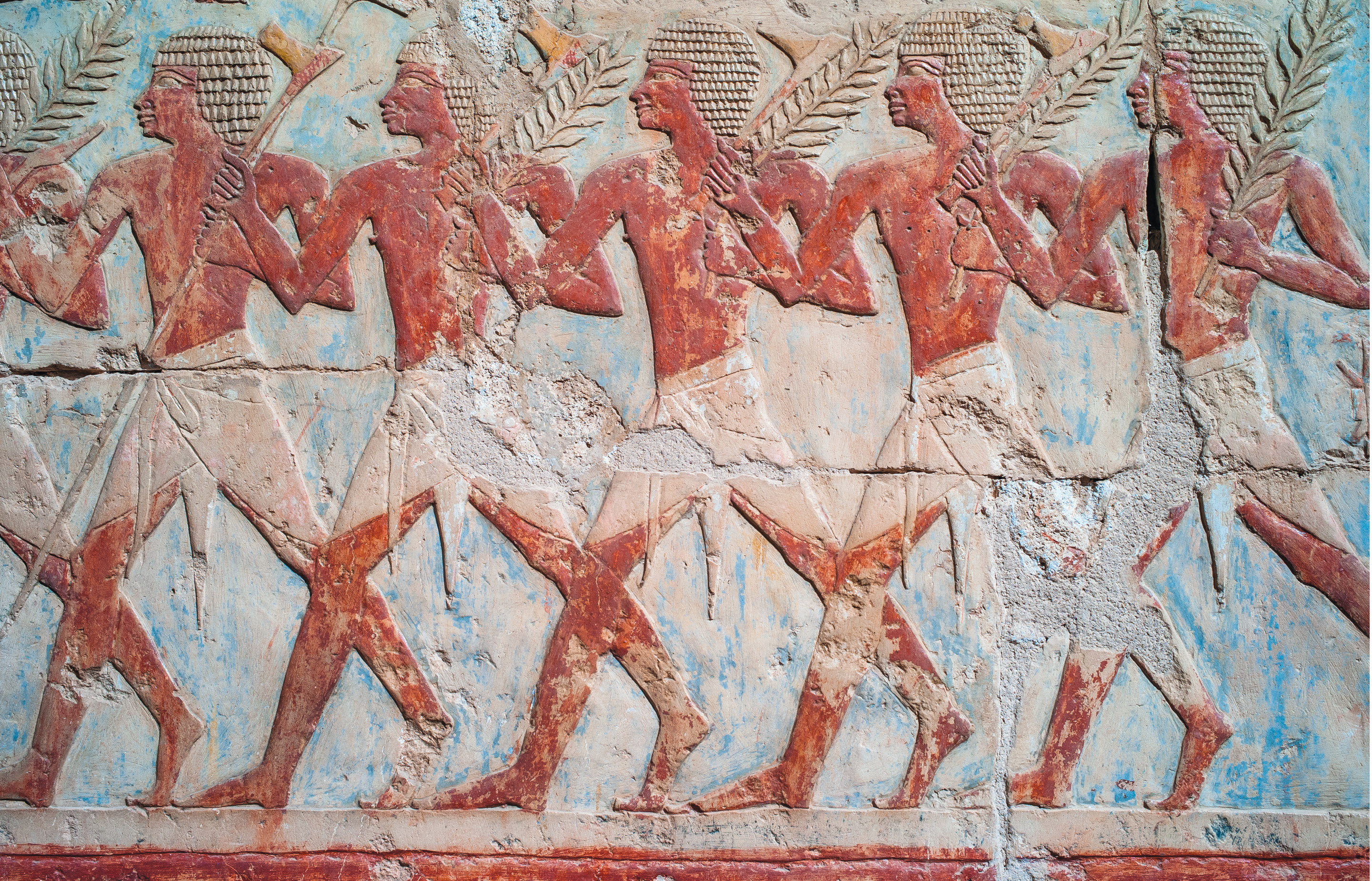Harbor of Pharaohs
Archaeologist Kathryn Bard ’68 discusses a decade of discoveries in Egypt—and the mystery of Punt.
More than 60 years ago, a child from Park Ridge, Illinois, visited the Egyptian collection in Chicago’s Field Museum. Her eyes landed on a small glazed ceramic amulet of a cat with two kittens. The object filled her with what would become a lifelong wonder about ancient Egypt.
That girl grew up to be Kathryn Bard ’68, an archaeologist who has co-directed two major excavations in Africa spanning about a decade each. In Aksum, Ethiopia, between 1993 and 2002, her team explored a number of sites that revealed artifacts dating to the late first millennium B.C. through the first millennium A.D., including the remains of two palace complexes and elite tombs. One tomb contained fragments of a Roman wine jar that had been imported from a vineyard in southern France.
Later, between 2001 and 2011, Bard and company switched to the other end of the Red Sea, this time excavating in Mersa/Wadi Gawasis, Egypt, at the site of a 4,000-year-old harbor, called Saww in ancient times, from where ships set sail for a land called Punt (pronounced “poont”). Bard calls it “the most fascinating project that I’ve ever worked on.”
According to ancient texts—hieroglyphs carved in stone—Punt was a prominent trading partner with Egypt for more than 1,000 years. The excavations by Bard and her team in Mersa/Wadi Gawasis yielded parts of some of the oldest seagoing ships ever found, and clear evidence that the ancient Egyptians had sparked the ongoing evolution of sea travel.
Within and outside of several human-made caves the team discovered, they excavated ancient ship timbers and riggings, well preserved food, expedition equipment, carved artifacts with hieroglyphic inscriptions about the expeditions, and materials and artifacts from Punt. Two cargo boxes were inscribed with “The wonderful things of Punt” and descriptions of their contents.
Bard says the marvels unearthed “just blew my mind. I’ve never seen evidence like we recovered there anywhere. It changed what people know about ancient Egypt.”
Sail Like an Egyptian
Bard’s first excavation in grad school took place at an ancient Egyptian temple site at Karnak.
“They were looking for the foundations of four temples that were built there by a heretical king named Akhenaten,” she recalls. “He was the husband of Nefertiti and father of Tutankhamen. And we found the evidence of these temples, the foundations of these temples, which were dismantled after he died.”
When most people imagine the land of pyramids, Sphinx, Cleopatra and King Tut, they think of the desert, and maybe the Nile River. But Egypt, at the northeast corner of Africa, touches two seas—the Mediterranean and the Red. Beginning in Lake Victoria in Uganda, the White Nile flows north and joins the Blue Nile at Khartoum in Sudan. From Khartoum, the River Nile flows north to the Mediterranean, with a combined length northward of 4,130 miles.
“Most of how people think of ancient Egypt is centered on the Nile, with ships going internally up and down the Nile,” Bard says. “But from 3,000 B.C. onward, the Egyptians were sending ships north in the Mediterranean to what is now Lebanon to get wood—so it’s a fallacy to think of Egypt as being a landlocked country.”
But let’s consider another destination with much more luxurious goods than wood. A land of gold, myrrh, incense, ivory, ebony and more—Punt. Four thousand years later, the question remains: Where was it?


